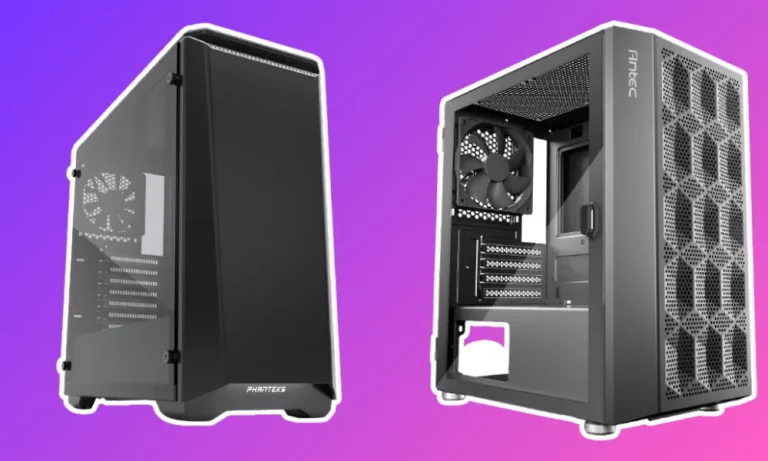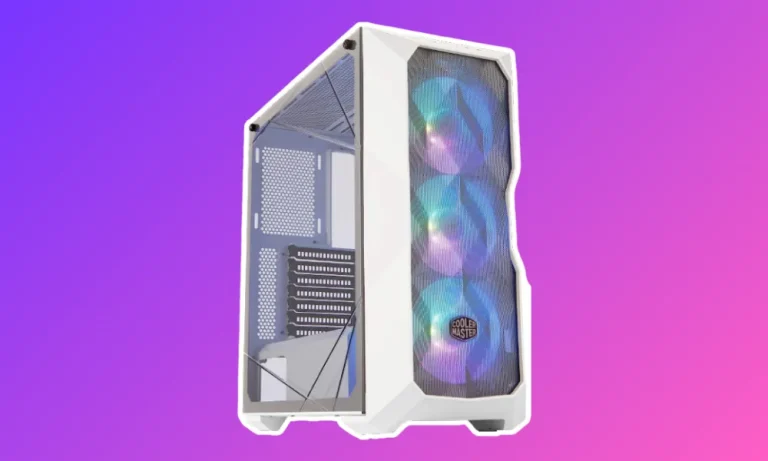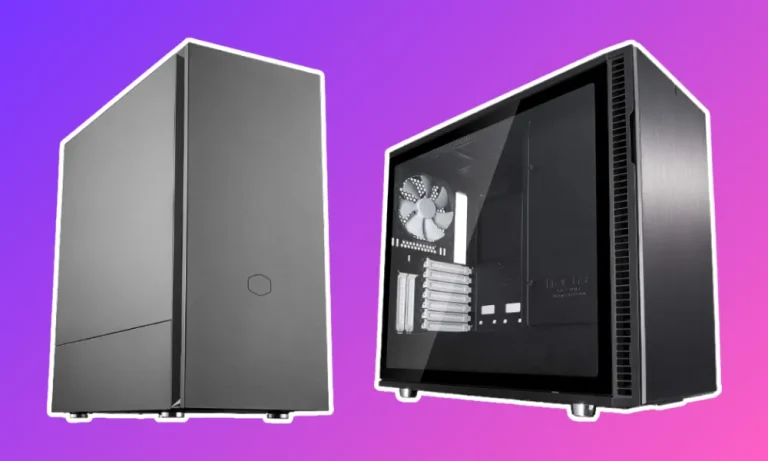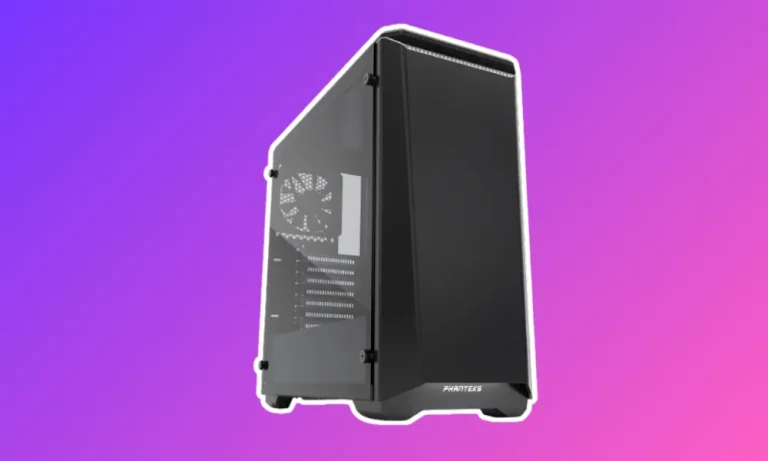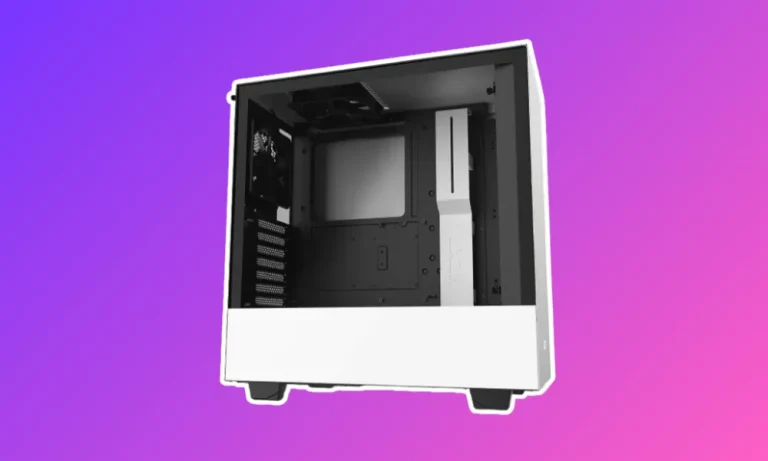Is it Safe to use an Open PC Casing?
Absolutely! If you’ve ever wondered about the safety of using an open PC casing, we’ve got you covered. Open casings are gaining popularity for their improved ventilation and easy accessibility.
In this blog post, we’ll explore the pros, cons, and safety considerations associated with open casings so that you can make informed decisions for your setup. Let’s dive in!
Pros and Cons of Using an Open PC Casing
When it comes to using an open PC casing, there are several advantages and disadvantages that you should consider. Let’s take a closer look at both sides of the coin.

Advantages
Improved airflow for better cooling performance
One of the significant benefits of using an open PC casing is the improved airflow it offers. Unlike closed casings, which can restrict air circulation, open casings allow fresh air to flow freely through the components.
This enhanced ventilation helps in maintaining optimal temperatures for your computer’s hardware, leading to better cooling performance and potentially extending its lifespan.
Easy access to components for maintenance and upgrades
Another advantage of open casings is the ease of accessing internal components. With traditional closed casings, you often need to remove panels or unscrew various parts to reach specific areas within your computer.
However, with an open-casing design, everything is readily accessible without any hassle. This makes routine maintenance tasks like cleaning dust or upgrading hardware much simpler and more convenient.
Disadvantages
Increased risk of dust accumulation
While improved airflow may be beneficial in terms of cooling efficiency, it also means that more dust particles can find their way into your system when using an open casing.
Dust accumulation over time can hinder proper functioning by clogging fans and vents, potentially leading to overheating issues or even component failures.
Regular cleaning routines become essential with open casings to prevent excessive build-up.
Higher vulnerability to physical damage
Open PC casings expose delicate internal components without any protective barriers compared to closed ones.
This increases their vulnerability to physical damage from accidental bumps or spills that could harm sensitive parts like circuit boards or connectors.
It’s crucial always to be cautious when working around an exposed setup and consider additional precautions such as securing it in a safe location away from potential hazards.
Addressing Safety Concerns with Open Casings
When using an open PC casing, it’s essential to address certain safety concerns that may arise. We’ll discuss two key areas of concern: electrostatic discharge (ESD) risks and dust management strategies.
Electrostatic discharge (ESD) risks
Electrostatic discharge can pose a threat to your computer components during the assembly or modification process. To prevent ESD-related damage, consider the following tips:
- Ground yourself: Before touching any sensitive parts, ground yourself by touching a grounded metal object or wearing an anti-static wristband.
- Use an ESD mat: Place an ESD mat on your workspace to provide additional protection against static electricity buildup.
- Handle components properly: Hold computer parts by their edges rather than touching delicate circuitry directly.
- Avoid carpeted areas: Working on a non-carpeted surface reduces the likelihood of static electricity accumulation.
Dust management strategies:
With open casings being more susceptible to dust accumulation, implementing effective dust management practices is vital for maintaining optimal performance. Here are some practical suggestions:
- Regular cleaning routines: Set up a regular cleaning schedule to remove accumulated dust from both the internal and external surfaces of your PC casing.
- Use dust filters: Install dust filters on intake fans and vents to minimize the amount of debris entering your system while still allowing proper airflow.
- Consider air purifiers: Employing air purifiers in your workspace can help reduce airborne particles and keep them from settling inside your computer.
Factors to Consider Before Opting for an Open Casing
When deciding whether to choose an open PC casing, it’s important to consider certain factors. By assessing environmental factors and understanding your usage requirements, you can make an informed decision that suits your needs.
Environmental factors
Before opting for an open casing, assess the cleanliness level of your surroundings. Take note of any potential challenges such as a dusty room or other environmental factors that may impact the performance of your system.
Dust accumulation is more likely in open casings, so consider if your environment poses a higher risk.
Usage requirements
Determine if your computer usage demands high-performance components that require efficient cooling. If you’re using power-hungry hardware like high-end processors or graphics cards, they generate more heat during operation.
In this case, an open casing with improved airflow can be beneficial to maintain optimal temperatures and prevent overheating issues.
By evaluating these two key aspects – environmental factors and usage requirements – you can weigh the advantages and potential drawbacks of using an open casing effectively.
It’s essential to strike a balance between improved ventilation offered by open casings and the risk of dust accumulation based on your specific circumstances.
Conclusion
Using an open PC casing can be safe and beneficial if you consider the pros, cons, and necessary precautions.
Improved airflow and easy access to components are advantages, but be mindful of dust accumulation and vulnerability to physical damage.
By making informed choices based on your environment and usage requirements, you can enjoy the perks of an open casing while keeping your system running smoothly.

